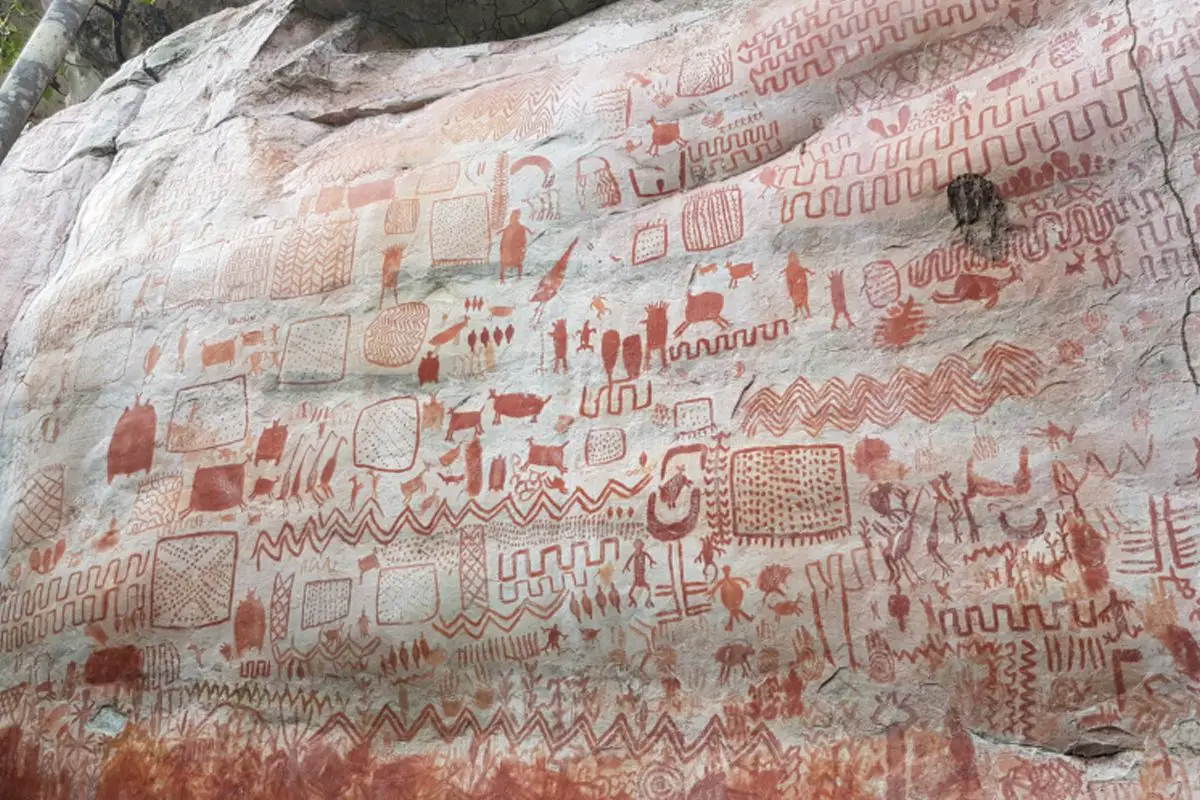Researchers from the University of Exeter have conducted a study of the shallow cave homes in the Amazon Basin.
The study focused on rock shelters in northwest Colombia, which were occupied by some of the earliest people to migrate to South America during the late Pleistocene era approx. 13,000-years-ago.
The study, part of the €2.5m European Research Council funded LASTJOURNEY project has provided new insights into the colonisation of the Amazon interior and the types domestic and ritual activity at cave shelter sites.
The cave inhabitants painted vibrant artworks on the cave galleries using ochre they prepared from a mixture of ferric oxide and varying amounts of clay and sand. They also fashioned stone tools, managed plant resources, and hunted a wide range of Amazonian animals.
“The ‘peopling’ of South America represents one of the great migrations of human history – but their arrival into the Amazon biome has been little understood,” says Mark Robinson, Associate Professor of Archaeology at the University of Exeter.
“For researchers working in the field, dense rainforest makes it challenging to identify potential fieldwork sites, and acidic, clay-based soils impair the preservation of organic remains. Our recent excavations, however, help to fill this gap, not only dating their arrival to much earlier than previously understood, but also providing novel insights into their lives and historical trajectories during the Holocene,” added Professor Robinson.
The study, published in the Quaternary Science Reviews, focused on two rock shelters in the Serranía La Lindosa region on the fringes of the Amazon and Orinoco basins.
The UE team excavated soil sediments from within the shelters and the area directly outside, which were subjected to a geochemical and stratigraphic analysis. The analysis revealed traces of stone fragments, charcoal, and organic matter, indicating food preparation, consumption and disposal, in addition to periods of abandonment over more than a millennia.
Moreover, the presence of ceramics dating back approximately 3,000 years, signs of soil cultivation from 2,500 years ago, and remnants of maize cultivation 500 years ago have all been unearthed.
“The results firmly establish that the human occupation of Serranía La Lindosa began in the late Pleistocene, about 12,600 years ago, and continued until the 17th century,” says José Iriarte, Professor of Archaeology at Exeter.
According to the researchers, the shelters offered protection and clear vantage points over the surrounding area for the early foragers. Ongoing research is also delving into various recovered artefacts such as animal bones, plant remnants, and ochre, shedding further light on the area’s ancient inhabitants.
“Activity patterns, artefact discard, and soil chemistry indicate that both rock shelters were used as domestic spaces through time, as well as sacred locations for the display of highly evocative art,” adds Dr Jo Osborn, Postdoctoral Research Associate.
“And it points to the existence of a broad-spectrum economy, with unifacial lithic tool technology. All of the rock shelters exhibit ochre paintings from the earliest occupations, indicating that those pioneers were also recording and making sense of this new world they encountered.”
Header Image Credit : University of Exeter







